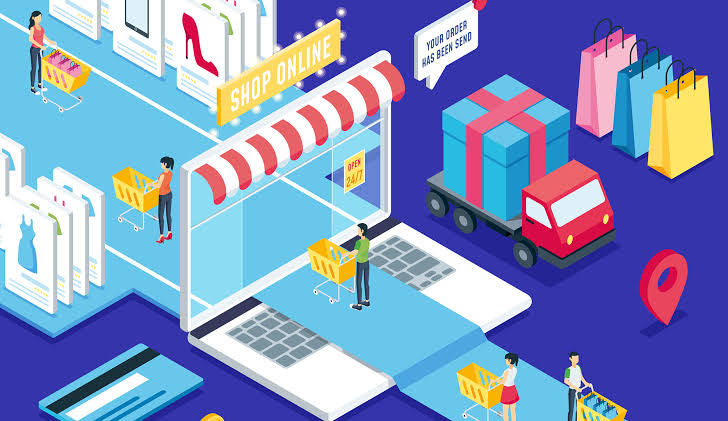The rise of online shopping has redefined the retail industry globally, creating one of the most significant transformations in consumer behavior in recent decades. Traditional brick-and-mortar stores that once dominated the market now compete with digital platforms offering speed, convenience, and broader product availability. With e-commerce sales surpassing trillions of dollars annually and growing at rapid rates, online shopping has not only changed how consumers purchase but also how businesses operate. The trends shaping the retail industry today reflect the influence of digital innovation, shifting consumer expectations, and the global expansion of online marketplaces.
Evolution of Consumer Behavior
The modern consumer is more digitally connected than ever before, with smartphones, tablets, and computers providing instant access to online stores. Shoppers now prioritize convenience, often preferring to browse and purchase products from the comfort of their homes rather than visiting physical locations.
This shift has reduced the dominance of traditional retailers, forcing them to adapt their models by integrating online platforms. Additionally, consumers increasingly rely on reviews, ratings, and user-generated content before making purchase decisions. This reliance on digital validation has reshaped how trust is built in the retail sector.
Growth of E-Commerce Platforms
The rapid rise of e-commerce giants such as Amazon, Alibaba, and other regional platforms has set new standards for pricing, delivery, and customer service. These companies have created ecosystems that extend beyond shopping, including financial services, entertainment, and logistics.
Local and mid-sized retailers have also leveraged digital platforms to reach broader audiences, sometimes bypassing the need for physical stores altogether. The expansion of online marketplaces has contributed to the decline of traditional malls in many regions, as consumers now seek variety and accessibility online rather than in physical shopping centers.
Omnichannel Retail Strategies
Despite the growth of online shopping, brick-and-mortar stores have not disappeared. Instead, many retailers are embracing omnichannel strategies that combine physical and digital experiences. For instance, click-and-collect services allow customers to order online and pick up in-store, bridging the gap between digital convenience and immediate product access.
Retailers are also incorporating digital tools into physical spaces, such as self-service kiosks, augmented reality fitting rooms, and personalized shopping apps. This blending of channels reflects how online shopping is influencing not only e-commerce but also in-store experiences.
Mobile Commerce and Social Shopping
Mobile commerce has become one of the fastest-growing aspects of online shopping. With smartphones accounting for a large percentage of internet traffic, retailers are optimizing mobile apps and websites for smooth transactions. Features like one-click checkout, digital wallets, and personalized product recommendations enhance the shopping experience on mobile devices.
Social media platforms have also become key drivers of retail trends. Platforms like Instagram, TikTok, and Facebook now integrate shopping features, allowing users to purchase directly through posts or live streams. This merging of entertainment, influence, and shopping demonstrates how online retail adapts to consumer engagement patterns.
Data-Driven Personalization
Online shopping platforms thrive on data collection and analysis. Retailers use advanced algorithms and artificial intelligence to track consumer preferences, browsing habits, and purchase history. This data allows them to offer highly personalized shopping experiences, from product recommendations to targeted discounts.
Personalization has become a major trend, as consumers increasingly expect tailored interactions rather than generic marketing. Businesses that effectively utilize data gain a competitive advantage by creating stronger customer loyalty and boosting sales.
Impact on Logistics and Supply Chains
The demand for faster delivery has transformed global logistics and supply chains. Same-day and next-day delivery services are now standard in many markets, pushing retailers to invest in advanced distribution networks and automation. Warehouses are being redesigned with robotics and artificial intelligence to meet the demand for speed and accuracy.
Additionally, retailers are turning to last-mile delivery innovations such as drones, autonomous vehicles, and local distribution hubs to ensure efficiency. This shift highlights how online shopping not only affects consumer interactions but also reshapes the entire infrastructure of retail operations.
Sustainability and Consumer Awareness
With the growth of online shopping, concerns about sustainability have also come to the forefront. Packaging waste, carbon emissions from delivery, and excessive returns contribute to environmental challenges. As a result, retailers are under increasing pressure to adopt eco-friendly practices, such as recyclable packaging, carbon-neutral shipping, and ethical sourcing.
Consumers are also becoming more conscious of their purchasing decisions, favoring brands that prioritize sustainability. The integration of technology to track and communicate sustainable practices is now a growing trend in online retail.
The Decline of Traditional Retailers
The shift toward online shopping has led to the decline of many traditional retail giants that were slow to adapt. Numerous physical chains have closed stores or filed for bankruptcy due to declining foot traffic and rising digital competition. However, those that embraced digital transformation have been able to maintain relevance.
Retailers are learning that survival in this new landscape depends on agility, technological integration, and consumer-centered strategies. Failure to adapt quickly leaves businesses vulnerable to losing market share to more innovative competitors.
The Future of Online Shopping
Looking ahead, online shopping is expected to integrate more emerging technologies such as augmented reality, virtual reality, and artificial intelligence to create immersive and interactive experiences. Shoppers may soon try on clothes virtually, visualize furniture in their homes before purchase, or interact with AI-powered personal assistants that guide buying decisions.
Additionally, the rise of Web3 and blockchain could bring more transparency and security to transactions, while digital currencies and decentralized marketplaces may redefine how consumers and retailers engage. The future of online shopping will likely continue blending technology with convenience, creating new possibilities for growth in the retail sector.
Conclusion
The impact of online shopping on retail industry trends is profound and far-reaching. It has shifted consumer expectations, disrupted traditional business models, and redefined how products are marketed, sold, and delivered. From personalization and sustainability to logistics and social commerce, the retail industry is now shaped by technology-driven innovations that prioritize convenience and engagement. While brick-and-mortar stores remain relevant, their role continues to evolve in response to digital demands. As online shopping expands further, the future of retail will be increasingly defined by the balance between human experiences and technological advancements.



